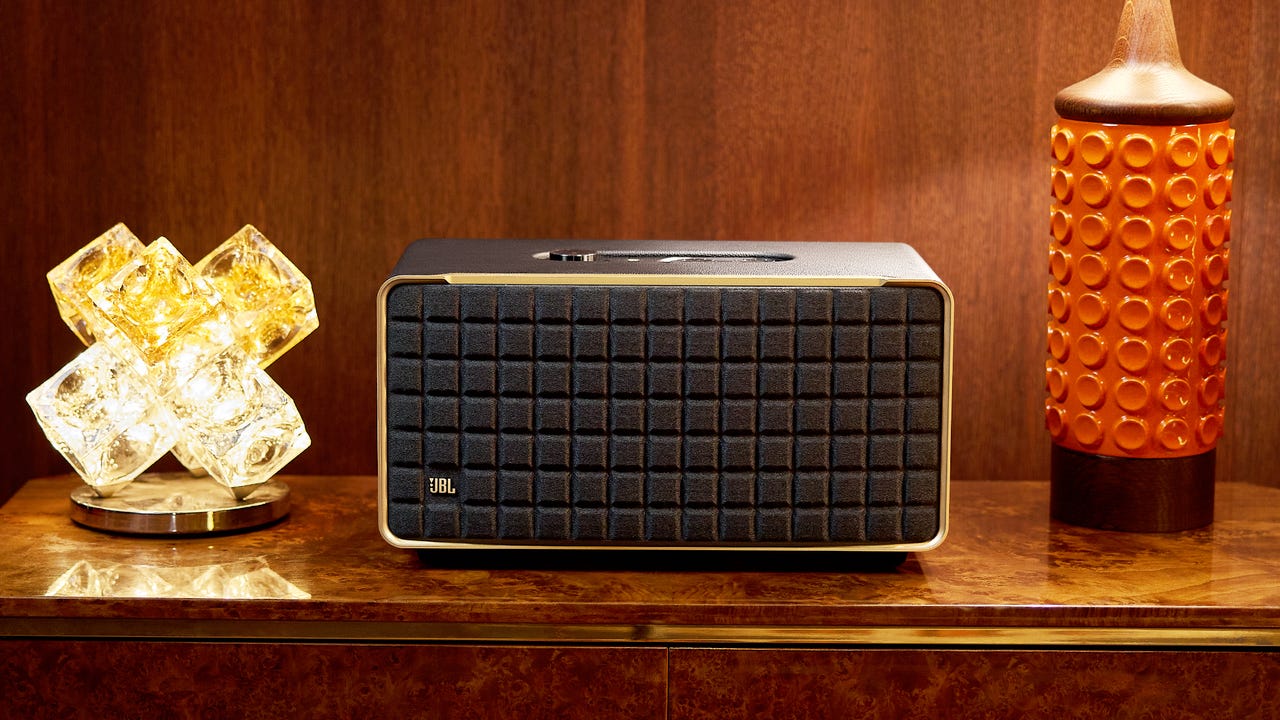
Harman is adding three new speakers to its JBL Authentics series, the 200, 300, and 500 models. But even if the vintage aesthetics are sure to catch anyone’s eye, the inside is what matters: This is the first smart speaker to combine both Amazon Alexa and Google Assistant for users to access simultaneously.
This means you won’t have to choose one smart voice assistant or even remember which one you asked to set up a timer or alarm. You could ask Alexa to set a timer and then ask Google to turn it off when it goes off, in case you have household members who prefer one assistant over the other.
Also: How to change Alexa’s voice on your phone or Echo device
“Amazon strives to be the most customer-centric company in the world, and it’s advancements like this that contribute to that goal,” said Aaron Rubenson, vice president of Amazon Alexa. “Customers win when they have choices, whether it’s the ability to choose which smart home device to bring into their homes or which assistant they want to use.”
Harman’s new JBL Authentics speakers will offer both Alexa and Google Assistant customers much of the same experience they’d get from the assistants on other devices, including the assistants’ respective supported languages, according to ZDNET’s discussions with Mark Yoshitake, GM and director of Alexa, and Marissa Chacko, director of product management at Google.
The JBL Authentics speakers all feature simultaneous voice assistants, multi-room playback, Bluetooth, Wi-Fi and Ethernet connectivity, automatic self-tuning, and controls through the JBL One app. The 500 model also features Dolby Atmos. They will be available in September, starting at $330 for the JBL Authentics 200 model and $700 for the Authentics 500.
Also: The best smart speakers
Behind the scenes, Amazon has worked on this collaboration with Google to ensure customers don’t have to purchase multiple devices to use more than one assistant. The multi-assistant integration will allow customers to use the corresponding wake words for Alexa or Google Assistant and access anything from their Amazon delivery status to events in their Google Calendar.
JBL Authentics line of smart speakers. Maria Diaz/ZDNET
“Personally, the whole reason why I became passionate about building multi-assistant experiences is because some of my family and friends have limitations using certain assistants due to lack of language support and availability,” said Amy King, senior technical product manager at Amazon. “Our whole goal with this integration is to make it easy for people to access different assistants with their voice based on their preferences and needs, as easily as they can switch between apps on their phone.”
Also: Amazon’s Echo Show 5 made me a smart display believer (and my daughter, too)
The integration was made possible by Amazon’s Multi-Agent Experience (MAX) Toolkit, to ensure the virtual assistants don’t speak over each other. Universal Device Commands (UDCs) simplify voice interactions so customers can ask either Google or Alexa for different things and then ask the other assistant to stop those requests.
To set up the voice assistants, users have to go to the JBL One app on a mobile device and enable them. Then users can say “Alexa” or “Hey Google” to wake the device. Users can choose only to enable one assistant as well.
“Our mission for Alexa is to create a trusted AI that makes life more convenient and fulfilling for anyone, anywhere,” said Rubenson. “To realize this vision, we’re working to make voice ubiquitous for customers across a range of products, including third-party devices that support multiple assistants. We see infinite possibilities for assistants to enhance customers’ lives, regardless of which assistant they choose to use.”




















